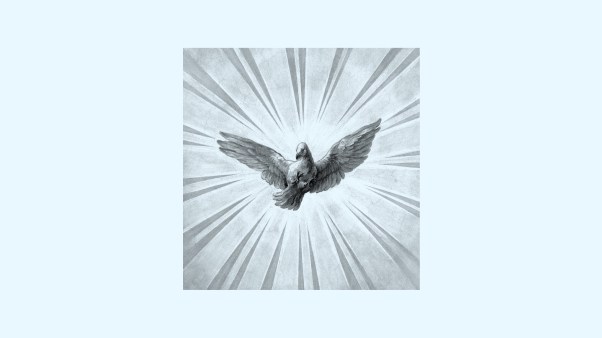History And The Resurrection
Interpreting the Resurrection, by Neville Clark (Westminster, 1967, 128 pp., $2.75), No Idle Tale, by John Frederick Jansen (John Knox, 1967, 106 pp., $3.50), and Jesus in the Gospels, by Ernest W. Saunders (Prentice-Hall, 1967, 324 pp., $7.50) are reviewed by Daniel P. Fuller, dean of the faculty and associate professor of hermeneutics, Fuller Theological Seminary, Pasadena, California.
These authors unite in affirming that although historical reasoning in itself can never compel faith in the risen Jesus, still the results of historical research are very important for faith. Clark, a former professor at Colgate Rochester Divinity School who is now a pastor in England, makes history important for faith by asserting that if the results of historical investigation were “totally incompatible with the Resurrection faith … then indeed the axe would be laid to the root of the tree.” For Jansen, a professor at Austin Seminary, historical reasoning can confirm an already existing faith by providing it with certain pointers (but not proofs!). Saunders, dean at Garrett Theological Seminary, declares: “Historical inquiry … can only correct or corroborate.… Historical inquiry alone cannot give the certainty of faith, but it can prepare the way for it.”
This is the common conclusion, even though each of these writers has mapped out distinctive areas for investigation. Jansen gives a stimulating exposition of Luke 24 and the first few verses of Acts. Clark makes an excellent summary of the whole theme of resurrection in the Old Testament, the intertestamental period, and the New Testament. And Saunders, in line with the renewal of interest in the historical Jesus brought on by the “new hermeneutic,” has written what could be termed a “life of Jesus.” His book deserves particular mention; although it is styled for use in the college classroom, its extensive footnoting refers the seminarian and minister to a vast amount of recent literature on all the important themes concerning Jesus and the Gospels. All in all, it makes for very informative and enjoyable reading.
To read these books is to be impressed by the complete control historical reasoning has over the authors’ arguments and conclusions. Their caveats to the contrary, some of the historical conclusions they achieve do seem capable of leading any reasonable man to faith. Jansen concludes that critical scholarship has been unable to show that the accounts of the empty tomb were simply late legends produced for the apologetic motive of affirming the corporeality of Jesus’ resurrection. Jansen argues that from the first a genuine Christian faith has affirmed the empty tomb, because to do otherwise would be to deny that the Lord of faith entered history. Likewise Clark, viewing on the one hand the complete disillusionment of the disciples after Good Friday and, on the other hand, the complete boldness with which they preached Jesus as risen from Pentecost onward, concludes that “between these two facts lies some reality which seems … to demand explanation.” And concerning the same phenomenon, the shift from despair to boldness, Saunders says: “Every psychologizing reconstruction of the Easter event founders on the fact that the cult of Jesus had its origin, not in the inspiration of souvenirs of a former companionship, but in the present experience of interpersonal encounters.”
Historical reasoning leads Saunders to other conclusions about Jesus that, if valid, would help to produce faith. He concludes that Jesus regarded himself as the Servant of Jehovah (spoken of in Isaiah), whose death must somehow benefit the whole of mankind, and that it is “in [Jesus’] extraordinary consciousness of serving as the meeting place between the Father and his children that the real clue to his self-understanding is given.”
This dedication to the historical method and the conclusions achieved seem to belie the insistence that, ultimately, faith stands without dependence on the results of historical investigation. Perhaps these writers mark only a station along the road from the complete separation of faith and history in Barth and Bultmann to the place where faith stands or falls simply on the verdict of history.
Reading For Perspective
CHRISTIANITY TODAY’S REVIEW EDITORS CALL ATTENTION TO THESE NEW TITLES:
• Run While the Sun Is Hot, by W. Harold Fuller (Sudan Interior Mission, $3.95). Fuller’s challenging incidents and stories, gleaned from his travels to SIM fields in Africa, will create greater appreciation for the work of missions.
• Parents on Trial, by David R. Wilkerson with Claire Cox (Hawthorn, $4.95). The founder of Teen Challenge relates stirring experiences from his inner-city youth ministry and calls for responsible parenthood to help curb delinquency.
• Beyond the Ranges, by Kenneth Scott Latourette (Eerdmans, $3.95). With gratitude that “God sent his whisper to me,” this Yale University professor emeritus, America’s foremost church historian, humbly and intimately describes his life as scholar and servant of the Church.
Boon To New Testament Studies
Theological Dictionary of the New Testament, Volume IV, edited by Gerhard Kittel (Eerdmans, 1967, 1,126 pp., $22.50), is reviewed by Ralph P. Martin, lecturer in New Testament studies, University of Manchester, England.
“No single work is perhaps more influential in the study of the New Testament today than Kittel’s Theological Dictionary.” This tribute of James Barr in 1961 was, of course, paid to the German original and was not intended to close the issue of Kittel’s great worth. Quite the opposite. For readers of Barr’s The Semantics of Biblical Language will recall the scathing attacks launched on some of the principles that he thought underlay the dictionary, ending with the allegation of “great and sweeping linguistic misconceptions which have become more widespread through its influence.” Interestingly, some of Barr’s most telling criticisms were directed against the contents of the fourth volume, in particular the articles on logos and mythos.
Whether Barr’s critique is well founded or not is not to be settled in this review. The issue is mentioned because now for the first time, thanks to the prodigious labors of Geoffrey W. Bromiley, who is translating Kittel with amazing efficiency, the reader of Barr’s book can test his criticisms by examining the word-studies themselves in English.
As Barr observed, some of the most important New Testament words have as initial letter either l, m, or n; they are therefore treated in this fourth volume. Here are such key terms as lambano (to receive, with its many cognate verbs), lego (“to say,” with its highly significant noun form logos), logizomai (“to reckon,” used in soteriological contexts of the non-imputation of sin because of Christ’s obedience), luo (“to set free”; the treatment includes a full discussion of such noun forms as “ransom,” and “redemption”), martys (“witness”), mimeomai (“to imitate”), monogenes (“only-begotten,” which like the next word listed has important Christological connections), morphe (how shall we render it—“form” or, as many modern scholars, guided by the Kittel article, now prefer, “glory,” thus linking Philippians 2:6 with John 17:5), mythos (myth), and nomos (law, in its many biblical connotations). This is just a selection of the pivotal terms treated in this volume, a sample of the good things in store for the diligent Bible student who is prepared to bury his head in a lexicon and awake in the presence of God, as E. C. Hoskyns once memorably put it.
Every work chosen for inclusion is treated according to its etymology and New Testament theological significance; but the key terms are given extended attention by being set in their Old Testament, classical and Hellenistic Greek, and Rabbinic backgrounds. Several words are treated in essays of monograph proportions, particularly the two words given pride of place: logos and mythos. The rich setting of Logos as title for the pre-existent Christ in John’s Gospel is explored, and a satisfying treatment of the Word as authoritative Scripture is given. The discussion of “myth” comes to the conclusion—with a side-glance at Bultmann—that the term is a pejorative one in the New Testament and should be dropped, because of its misleading associations, from the current debate. This was written in 1942, when the demythologizing proposals had just been ventilated.
To list all the admirable aspects of this work is impossible. A random reading revealed the following helpful insights. The article on laos (“people”) shows the centrality of the People of God in both Testaments. Ekloge (“choice”) contributes much to the vexed question of election. Rengstorf writes on lestes (“bandit”) and prepares for the recent debate on the place of Zealots in the gospel tradition. The articles on “ransom” are not afraid of substitutionary atonement, and Büchsel has provided the data for any worthwhile doctrine of the Atonement. Maranatha is explained as “Our Lord, come,” and the writer places it in a Eucharistic context without denying its eschatological overtones. The contribution on mimeomai (“to mimic”) comes to the novel conclusion that imitation in the biblical sense means not the repetition of a model but the expression of obedience. “The call for an imitation of Christ finds no support in the statements of Paul.” Bornkamm on mysterion (“mystery”) finds no evidence for a relation of the New Testament to the mystery cults of the ancient world. There is a brilliant article by Jeremias on “Moses.” who is placed in his Old Testament and Rabbinic setting and seen to be part of the Messianic hope in the first century. The writers on nomos have a long tale to tell. Of special merit is their handling of the complex relation between Jesus and the Law of Moses.
In all there is little ground for complaint. Jeremias on lithos (“stone”) repeats his (unlikely) interpretation of Ephesians 2:20, on which E. Percy has written convincingly in defense of the traditional view. “Middle wall of hostility” in the same chapter seems to be an allusion to the Temple balustrade in spite of Schneider’s curt denial. The discussion of anamnesis (“remembrance”) cries out for fuller consideration, in the light of the Eucharistic misconceptions of “This do in remembrance of me.” But these are spots on the sun.
Volume IV takes its place on the shelf as an indispensable reference work and, if I may venture a personal opinion, the most important volume of this dictionary to date.
The First Ten Years
A Christianity Today Reader, edited by Frank E. Gaebelein (Meredith Press, 1967, 271 pp., $7.95), is reviewed by Melvin E. Lorentzen, visiting lecturer in the Writing Seminars, The Johns Hopkins University, Baltimore, Maryland, on leave of absence from the English Department, Wheaton (Illinois) College.
The trouble with magazines, especially the better ones, is that they accumulate so! What a boon, then, for a reader who is swamped by stacks of old copies and clippings, when a periodical compresses ten years of publication into a single volume. And if the anthologist has the catholic taste and discerning sense of the significance that Dr. Frank Gaebelein shows in this book, the blessing is compounded.
In these pages, regular readers of CHRISTIANITY TODAY will find a gratifying assortment of popular features, memorable articles, provocative editorials, book reviews, news reports, ministerial aids, and even a taste of “sugar and spice” in poems and cartoons.
Being what it is, the book brings the magazine more than itself under judgment. Has this periodical, which set forth such unequivocal goals for itself in the inaugural editorial on October 15, 1956, managed to deliver the goods? The answer to that question requires a clear understanding of the avowed purpose: “… to express historical Christianity to the present generation … in terms of reverent scholarship and of practical application.” Prime concerns included “the biblical concept of inspiration,” “true ecumenicity,” “impact of evangelism,” “the contemporary social crisis.” The classified table of contents reveals at once both a comprehensive scope and an intense earnestness in editorial coverage that imply attainment of the objective.
By far the most important aspect of the Reader, however, is the concentrated exposure it gives to evangelical thought today. Are these numerous writers, who represent generally an enlightened conservative tradition, intellectually respectable, culturally relevant, and spiritually vital? Although readers must form their own opinions, a sampling of quotations gives an indication of the quality of the book.
We stand at one of the most important crossroads in modern times for the evangelical witness. Evangelical patriarchs are prone to exaggerate our gains, while evangelical youth are prone to exaggerate our losses. Both mistakes are costly.
Worship is not a sort of general spraying in all directions of reverence and awe, to be soaked up by whatever deity exists. It must, rather, be based on communion between two self-conscious beings who know each other.
There must be a conceptual or a propositional element in revelation or otherwise revelation is no more the Word of God as truth.
The Christian campus does not need a devil on its faculty; a devil’s advocate will do.
The Church often prays for awakening, but when God actually sends it in a form which the organized Church finds uncongenial, it is repudiated.
An up-to-date strategy for the evangelical cause must be based upon the principle of infiltration.… It is time for firm evangelicals to seize their opportunity to minister in and influence modernist groups.
History has its own sifting process. Therefore evangelicals must not isolate themselves from those of evangelical conviction within the Roman Catholic Church.
It is because of who and what God is, it is because of the beauty and truth manifest in his Son, it is because of the perfection of his redeeming work, that evangelicals can never be content with the mediocre in aesthetics.
These statements are not vapid generalizations; they are key ideas in carefully reasoned and often lengthy arguments. In reading this collection, one cannot escape the evident spirit of devotion to orthodoxy combined with an awareness of what is going on in the world and a concern to do things about it.
Since the Reader purports to sample the “best” (in Dr. Gaebelein’s excellent judgment as former co-editor of the magazine) of the material in more than 250 issues of CHRISTIANITY TODAY, it would be presumptuous to say which is “best” of these selections. Some of the materials, such as certain news reports and editorials, are of relatively dated value, though they may have merit among chronicles of the decade. Fortunately, the bulk of the contents offers insight and discussion of timeless worth, simply because “historical Christianity” is the constant subject.
The Reader shows that CHRISTIANITY TODAY is in touch with our times, and that the “faith once delivered,” perennially relevant, has never needed to be proclaimed more urgently than it does in our day.
The Puritans And The Queen
The Elizabethan Puritan Movement, by Patrick Collinson (University of California Press, 1967, 528 pp., $10), is reviewed by Philip Edgcumbe Hughes, visiting professor of New Testament, Columbia Theological Seminary, Decatur, Georgia.
So many books have been written on the Elizabethan period that one might be tempted to wonder whether there is anything new to be said. But the historian’s task is never done, and Dr. Collinson’s impressive volume will be heartily welcomed by those who have been awaiting a definitive study of the Puritan movement during the latter part of the sixteenth century. His masterly work of profound and perceptive scholarship is essential reading for those who wish to understand the complex fortunes of the Church under Elizabeth and also the prelude to the development of the more robust Puritanism of the following century.
The Puritans were for the most part moderates who had no quarrel with the doctrines of the Prayer Book and Articles of the Church of England. Their wish was to have freedom to concentrate on a ministry of biblical preaching and teaching at a time when there was a serious dearth of competent ministers of the Word, and they had the support and encouragement of the majority of the diocesan bishops.
Regrettably, however, the Queen seemed incapable of appreciating the importance of preaching; indeed, she would have been well content to authorize nothing further than readings from the two official books of homilies at public worship. Moreover, she could not overcome a disposition to regard the Puritans as a potentially subversive element in her realm because they were not happy with the status quo. Their desire to see the introduction of a modified, non-prelatical form of episcopacy and to be exempted from observing a number of ceremonial details and from wearing the prescribed vestments—surplice, tippet, and cap—was not unreasonable. (Incidentally, Collinson shares in the common misunderstanding of the Ornaments Rubric, that it was intended to enforce the wearing of the Roman mass vestments. Evidence to support this interpretation is lacking, and, not surprisingly, he adduces none—a blind spot in an otherwise admirably reasoned and documented volume.) How different, and less tragic, history would be if conformity were never demanded in matters commonly admitted to be indifferent!
The appointment of John Whitgift as Archbishop of Canterbury signified a determination to take a tough line with the Puritans. Whitgift’s predecessor, the gentle Edmund Grindal, had risked and lost (in effect) his high office through his courageous action in pleading with Elizabeth the cause of the “godly preachers” and their “exercises.” Whitgift became the dedicated and overbearing hunter of nonconforming Puritans. His zealous intolerance was carried forward by his successor, Richard Bancroft, and reached its fiercest expression in the intransigence of William Laud.
The final and disrupting tragedy was the “great ejection” effected by the Act of Uniformity in 1662, when some two thousand of the most worthy clergy felt in conscience bound to depart from the church of their fathers. How different, again, history might have been had the terms of the Millenary Petition—presented by the Puritans to the new sovereign, James I, in 1603 and discussed at the Hampton Court Conference at the beginning of the next year—been approved. Extremists on both sides have much to answer for.
Collinson rightly observes that “there was no suggestion in these formal demands that any radical change was looked for in the organization or government of the Church, or in its public worship,” and he complains that “all too many … have indulged in the unwarranted assumption that full-blooded Presbyterianism was implied and even openly advocated in the presentation of the Puritan case.”
We are greatly indebted to this author for a work of scholarship that gives evidence of exceptional authority and distinction.
The Implications Of Auschwitz
A Theology of Auschwitz, by Ulrich E. Simon (Victor Gollancz Ltd., 1967, 160 pp., 25 s.), is reviewed by Jacob Jocz, professor of systematic theology, Wycliffe College, Toronto, Canada.
Professor Emil L. Fackenheim of Toronto University asked the disturbing question with regard to Auschwitz: “Can we confront the Holocaust and yet not despair?” (Judaism, Summer, 1967, p. 272). Unfortunately, Gentiles are less worried by what happened in Europe some twenty years ago. This lack of concern reveals that in our brutalized society where violence is the daily fare we have become hardened to cruelty.
But the grim facts of Auschwitz are so challenging that they cannot be bypassed or assigned to oblivion. Jewish intellectuals, gradually recovering from the stunning effects, are in search of a perspective through which to assess the meaning of Auschwitz and all it stands for (see the symposium in Judaism, Summer, 1967). The Church too is pressed to interpret the holocaust, though so far only a few voices have been heard. Christians cannot assign Auschwitz to oblivion: we are too implicated in the tragedy by acts of commission and omission. We must therefore be grateful to Dr. Simon for having the courage to face Auschwitz, with all its implications for humanity at large, from a Christian perspective.
Like Professor Fackenheim, Dr. Simon refuses to despair, but for quite different reasons. As a Christian believer he is able to place the grim facts of Auschwitz against the background of the crucifixion and resurrection of Jesus Christ and in this new light lift the gruesome tragedy of our age to a higher level.
Because God himself is in the camp of slavery through the presence of Jesus Christ, Auschwitz, despite its mad irrationality, can acquire a positive value both for us who have survived and for the victims who perished. The author’s underlying premise is the Christian conviction that all suffering relates to the suffering of the Son of God and therefore is never wasted. Although the crime itself is so staggering as to be utterly incomprehensible, the millions immolated could not have died in vain. To accept the opposite view would be an unbearable burden to the believer. It is only when we are able to see “the misery of Auschwitz as a reflection of an eternal reality” that we can still believe in a loving God. Because God’s answer to the Cross is the resurrection of Jesus Christ, there is a word of hope beyond the tragedy of Auschwitz.
But Auschwitz is not only a challenge to the believer; it is a challenge to the world at large. Simon insists that “Auschwitz disposes of evil and suffering as a kind of private issue.” It reveals the fact of the cohesion of the human race and common responsibility: the nations are somehow implicated in the crimes perpetrated in German concentration camps. We cannot point to the Germans without at the same time accusing ourselves. Modern man with his moral relativisim has created the atmosphere that made Auschwitz possible. Simon has some hard words to say to theologians who espouse an antinomian attitude in their flirtation with the world. The false humanism that accepts evil as a natural phenomenon is guilty of paving the way to the gas ovens of Auschwitz. The only positive thing we can say about the tragedy is that it discloses our true human condition “as something incomprehensible and insoluble in merely human terms.” Auschwitz therefore brings to an end the pernicious doctrine of the divine superman. It also reveals the facile nature of humanism, which “lacks the categories of judgment by which it can repudiate evil on a transcendental scale.” In the present impasse of moral dissolution and ideological despair, all we can do is cry to God: Libera nos, Domine …! God’s answer is the Kingdom of his Son.
This is a great book both in depth of faith and in breadth of vision. Only a man of Dr. Simon’s background could have written it: He is German by upbringing, Jewish by descent, and Christian by conviction. Characteristically enough, the book is dedicated to the memory of two great humanitarians: Dr. Bell, the late bishop of Chichester, and Victor Gollancz, one of the most remarkable Jews of our century.
I Remember Mama
Christy, by Catherine Marshall, (McGraw-Hill, 1967, 469 pp., $6.95), is reviewed by Nancy M. Tischler, associate professor of English and humanities, The Pennsylvania State University, University Park.
In Christy, Catherine Marshall has written another book clearly destined to be a favorite among Christian readers. Christy tells of the hardy Scotch Presbyterians who settled in the Smoky Mountains, a people fiercely proud of their heritage who clung to their old ballads, their taste for Latin and liquor, their independence, their marriage and burial customs, their pride, their stern religion, and their violent feuds. The picture of these austere and colorful people, set against the magnificent scenery of the great mountains, is vivid and detailed. By showing how their suspicions and their loyalties developed from their cruel lives, the author produces a sensitive analysis of their natures.
Christy is the fictionalized story of Catherine Marshall’s mother, who at nineteen hears a speaker at Montreat tell of the terrible need for a teacher at an interdenominational mission among the hill people. She responds, feeling that it is God’s will for her to leave her comfortable home in Asheville and become a teacher, nurse, and friend to the people of Cutter Gap. She discovers that her journey is a trip backward in time, to a life almost unchanged since the eighteenth century. But she is no romantic, basking in the quaint habits of backwoods people. She sees filfth, disease, deformity, cruelty, hatred, brutality, drunkenness, and death. In her first year she is forced to accept the reality of evil in a universe created for love. In the face of death, she must consider honestly the reality of the afterlife. When she meets success, she must try to separate pride from philanthropy. When she meets failure, she must seek some good to salvage from the evil. This is, in short, the story of a young girl maturing in her Christian faith, as she discovers the immediacy of God, the nature of his response to prayer, her own weaknesses, and her need to love, to feel joy, and to experience all of life.
It is a good book, full of fascinating insights into hill life, permeated with the reality of God’s presence and with sensitivity to beauty, to joy, to love. Mrs. Marshall (LeSourd) is a clever enough story-teller to use wisely the elements of humor, suspense, character development, mystery, and romantic love to keep the reader involved in the story. Her tale is simply told but contains an impressive depth of meaning. She hints at the weakness of a ministry built on self-esteem, outside coercion, or weak social altruism. She quarrels with pat solutions and easy platitudes. She doubts that one can love another human being fully without first loving God. She clearly calls on the reader to inspect his own selfish motives for doing good, his own relationship with God, and his own faith.
For the picture it paints, the adventure it chronicles, the atmosphere it creates, the questions it raises, the beauty it reveals, and the joy in Christian living it communicates, Christy is a book worth reading.
Book Briefs
Christ and Israel: An Interpretation of Romans 9–11, by Johannes Munck (Fortress, 1967, 143 pp., $4.25). First English translation of an early study by the former professor of New Testament at Aarhus, Denmark. Munck interprets Romans 9–11 on the basis of the Pauline conviction, born of his experience as a missionary, that the Gentiles must first be saved, then Israel, not Israel and then the Gentiles, as the Jews believed the Old Testament to teach.
Commentary on the Holy Bible, by Adam Clarke, edited and abridged by Ralph Earle (Baker and Beacon Hill, 1967, 1,356 pp., $11.95). An abridgment of a well-known six-volume, nineteenth-century commentary in one massive volume.
Enthusiasm Makes the Difference, by Norman Vincent Peale (Prentice-Hall, 1967. 244 pp., $4.95). Another offspring of Peale’s The Power of Positive Thinking. While we can’t get enthusiastic over it, our thinking about this potpourri of aphorisms and anecdotes is by no means negative.
The Negro Almanac, edited by Harry A. Ploski and Roscoe C. Brown, Jr. (Bellwether, 1967, 1,023 pp., $22). A unique, fairly good reference work on U. S. Negro history, biography, and statistics, with inadequate, spotty coverage of religion.
The Greatest Song, by Calvin Seerveld (Trinity Pennyasheet Press, 1967, 104 pp., $5). An unusual, creative work that presents a fresh translation of the Song of Solomon, set to music for oratorio presentation. A commentary on the Song is included. Ministers of music especially should take note of this.
Preaching from the Whole Bible, by Bo Giertz (Augsburg, 1967, 141 pp., $3.95). Short, sound meditations on major biblical themes following texts appropriate for the church year. By a Lutheran bishop of Gothenburg, Sweden.
The Positive Use of the Minister’s Role, by David C. Jacobsen (Westminster, 1967, 111 pp., $3.25). Fuzzy theology but some good suggestions to help pastors minister more effectively to people with various types of problems.
American Participation in the Second Vatican Council, edited by Vincent A. Yzermans (Sheed and Ward, 1967, 684 pp., $16.50). This massive volume sets forth the contributions of the American Catholic hierarchy in the spirited debates of Vatican II. Important for all who seek to understand this historic council.
The Divided Kingdom, by Charles F. Pfeiffer (Baker, 1967, 117 pp., $2.95). In this the fifth volume of Pfeiffer’s series on Old Testament history, he studies Israel (the Northern Kingdom) and Judah (the Southern Kingdom) from the death of Solomon to the Babylonian captivity. Succinct, simple and sound.
Tarbell’s Teacher’s Guide, 1968, edited by Frank S. Mead (Revell, 1967, 383 pp., $3.25). A boon for teachers of the “International Sunday School Lessons.”
Paperbacks
Men Who Dared, by Barbara Jurgensen (Tyndale House, 1967, 133 pp., $1.95). The lives and messages of the minor prophets wryly retold in modern language by the wife of a Lutheran campus pastor. Great for young people.
The Way of Holiness, by Kenneth F. W. Prior (Inter-Varsity, 1967, 128 pp., $1.50). A clear exposition of biblical sanctification, the gradual process by which the Holy Spirit transforms the believer into the “image of Christ.”
The Man Jesus (Regal Books and Tyndale House, 1967, 273 pp., $1.45). The life of Jesus is narrated in modern language with quotations from Living Gospels. Read it and distribute it.
The Magnificat: Luther’s Commentary, translated by A. T. W. Steinhaeuser (Augsburg, 1967, 77 pp., $1). Like a Bach fugue, Luther’s treatise of Mary’s hymn of praise still thrills the soul hundreds of years after its composition.
The Acts of the Apostles, by Charles Caldwell Ryrie; First and Second Peter, by George H. Cramer; First Corinthians, by G. Coleman Luck; First Timothy, by D. Edmond Hiebert; Isaiah: The Salvation of Jehovah, by Alfred Martin; John: The Gospel of Faith, by Everett F. Harrison (Moody, 1967; each volume 127 pp., $.95) Paperback reprints in the evangelical and practical “Everyman’s Bible Commentary.”
The Nag Hammadi Gnostic Text and the Bible, by Andrew K. Helmbold (Baker, 1967, 106 pp., $1.50). An excellent discussion of important knowledge gained from second- and third-century Gnostic texts discovered in 1945. They shed light not only on Gnosticism’s spirit-and-matter dualism but also on problems encountered in New Testament criticism.
The New Legality, by Hebden Taylor (Presbyterian and Reformed, 1967, 55 pp., $1). An excellent critique of the new humanistic legality that makes the state, and not God, sovereign.
Stranger in the Land, by Robert Lee (Friendship, 1967, 216 pp., $2.95). A sociologist-theologian scrutinizes the Christian Church in Japan and finds it similar to the American church in its tendency to have five types of churches: inner-city, workingman’s, downtown, uptown, and suburban. Although Christianity has made progress as a force in the Japanese culture, Lee claims it yet remains for the most part a foreign faith.
Holy Church or Holy Writ? by Hermann Sasse (Inter-Varsity Graduates Fellowship, 1967, 24 pp., $.45). Assessing new developments in Roman Catholicism, this Lutheran theologian insists that the Bible and not the Church must be the source of authority in ecumenical undertakings.
Ministry for Tomorrow, Report of the Special Committee on Theological Education, Nathan M. Pusey, chairman, and Charles L. Taylor, director of the study (Seabury, 1967, 147 pp., $2.50). A committee chaired by Harvard’s president recommends a board to oversee the training of Episcopal ministers for a changing church in a changing world.
Moody, by John Pollock (Zondervan, 1967, 336 pp., $1.95). A warm and well-rounded biography of the pacesetter in modern mass evangelism. This new paperback edition should induce more ministers and laymen to read this skilled biographer’s work.










